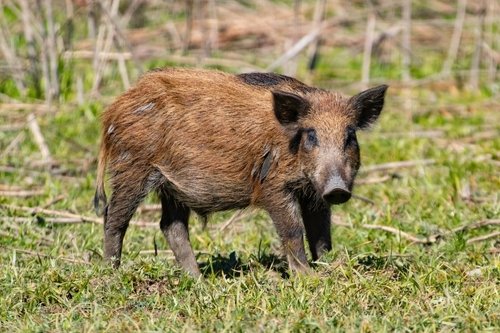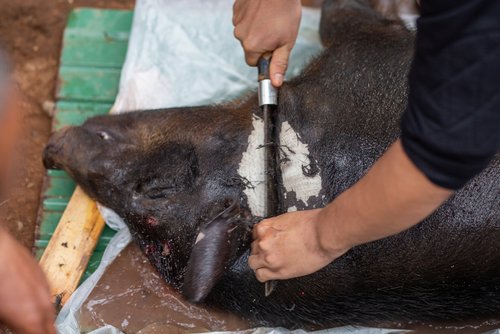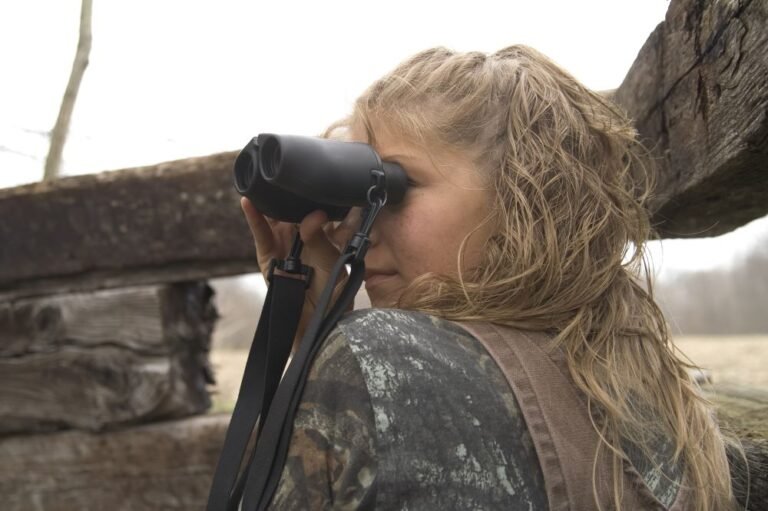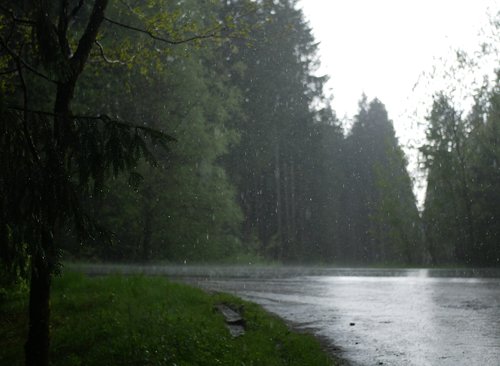Exploring the Best Hog Hunting Spots in North Carolina
Regarding outdoor activities in the beautiful state of North Carolina, hog hunting ranks high on the list for many adventurous souls. The thrill of tracking and capturing wild hogs amidst picturesque landscapes is an experience that attracts locals and visitors alike. In this blog we will discuss North Carolina hog hunting.
With its diverse terrain, including coastal regions, dense forests, and rugged mountains, North Carolina offers many opportunities for hunting enthusiasts to indulge in their passion. Wild hogs have become an invasive species in the state, causing significant ecological concerns.
Their destructive behavior poses threats to native wildlife habitats and agricultural lands. As such, hog hunting serves as an exciting recreational pursuit and plays a crucial role in managing their overpopulation.
History of Hog Population and Its Impact on the Ecosystem
The history of hog population growth in North Carolina can be traced back to colonial times when European settlers introduced domestic pigs for farming purposes. Over time, some pigs escaped captivity or were purposefully released into the wild, where they thrived due to their adaptability and reproductive capabilities.
As these feral pigs multiplied exponentially over decades, their impact on the ecosystem became increasingly evident. Wild hogs’ voracious appetites led them to extensively root through vegetation, damaging native plants and disrupting fragile ecosystems.
Additionally, they outcompete native wildlife for food resources while preying on ground-nesting birds and small mammals. Recognizing the need for management strategies, hog hunting emerged as an effective method to control their population and mitigate the detrimental effects they exerted on local ecosystems.
This historical backdrop sets the stage for understanding why hog hunting is a recreational pastime and a necessary conservation practice in North Carolina. Hog hunting has become deeply embedded in North Carolina’s outdoor culture, allowing enthusiasts to embrace their love for the hunt while contributing to preserving the state’s delicate ecosystems.
In the following sections, we will explore various aspects of hog hunting in North Carolina, including regulations and licensing, popular hunting locations, techniques and equipment used, challenges faced during hunts, conservation efforts, and tips for successful trips. So strap on your gear and dive into the thrilling world of hog hunting in beautiful North Carolina!
Understanding Wild Hogs in North Carolina
Regarding hog hunting in North Carolina, it’s crucial to understand these mighty creatures’ physical characteristics and behavior patterns. Wild hogs, also known as feral pigs, can vary in size and appearance. They possess a muscular body covered with coarse hair in shades like black, brown, or reddish.
These formidable beasts can weigh anywhere from 100 to 300 pounds or more, depending on their age and access to food sources. They are equipped for survival with long snouts ending in strong tusks and razor-sharp teeth.
In terms of behavior, wild hogs are highly adaptable creatures with impressive intelligence. They possess a keen sense of smell and exceptional hearing abilities, making them wary adversaries during hunts.
Generally nocturnal by nature, they tend to be more active during the evening when it’s darker and cooler. However, hog sightings during daylight hours are not uncommon either.
How Hogs Became an Invasive Species in the State
To fully grasp the significance of hog hunting in North Carolina today, it is essential to understand how these hogs became an invasive species within the state’s ecosystems. Wild hogs’ presence traces back to when settlers introduced domesticated pigs for farming purposes centuries ago. Over time, these domestic pigs escaped or were released into the wild due to various factors such as natural disasters or human negligence.
The fertile lands and abundant food sources across North Carolina offered an ideal environment for these adaptable animals to flourish. Initially, with no natural predators or effective population control measures, their numbers rapidly multiplied over generations.
As a result, their impact on native wildlife habitats increased significantly. This proliferation led to various ecological concerns as they began competing for resources with native species and damaging crops or natural vegetation.
With their foraging habits and tendency to root the ground in search of food, wild hogs can cause extensive damage to forests, farmlands, and even waterways. As non-native invaders, they disrupt the delicate balance of North Carolina’s ecosystems, prompting the need for management strategies, including regulated hunting programs.

Regulations and Licensing for Hog Hunting in North Carolina
Anchoring the Hunt: Seasons, Limits, and Licenses
When it comes to hog hunting in North Carolina, my eager fellow hunters, it’s crucial to be well-versed in the regulations that govern this thrilling pursuit. The North Carolina Wildlife Resources Commission sets specific guidelines for hunting seasons, bag limits, and required licenses or permits. Now, hold your horses (or rather hogs) for a moment – let me enlighten you on what these entail.
Picture this: as a hog-hunting enthusiast, knowing the hunting season dates is akin to having a treasure map leading you straight to those fierce wild boars. Typically running from late fall through early spring, these seasons provide ample opportunities to embark on adrenaline-filled escapades through the untamed wilderness of our beloved state.
However, some counties may have additional restrictions or different season dates due to varying ecological factors. Now let’s talk bag limits – not shopping bags, mind you!
Bag limits are the maximum number of hogs an individual hunter can harvest during a given period. In our great state of North Carolina, feral hogs haven’t any set bag limits because their population growth poses significant threats to agriculture and native wildlife.
As responsible hunters aiming for balance within ecosystems (and some tasty bacon), we’re encouraged to help reduce hog populations by taking as many as possible! But hold your excitement a bit longer – before venturing into the wild with a gun or bow in hand, ensure you obtain the appropriate license or permit.
It’s not just an official piece of paper; it showcases our commitment as conscientious hunters who understand the importance of adhering to legal requirements. The type of license needed will depend on various factors such as residency status and age group; luckily for us avid sportsmen and sportswomen, obtaining these licenses is relatively straightforward, often available online or at local license agents throughout the state.
Unleashing the Hunter Within: Regulations and Safety
Now that you know about hunting seasons, bag limits, and licenses, let me guide you through some specific regulations associated with hog hunting methods, weapons, and safety measures. As exhilarating as the case may be, it’s essential to remember that responsible hunting practices ensure our safety and this age-old tradition’s sustainability. North Carolina law prohibits using bait to attract hogs during hunts to keep things fair and prevent shortcuts (we’re looking at you, impatient hunters).
We must rely on our cunning skills to track down those elusive creatures. Some hunters employ dogs trained specifically for hog hunting; however, it’s crucial to note that using dogs for this purpose is only allowed during daylight hours.
Regarding weaponry, my fellow enthusiasts will be delighted to know that a wide range of options are available for hog hunting in North Carolina. From firearms such as rifles or shotguns suitable for different distances and environments to archery equipment like compound bows or crossbows for those seeking an added challenge – there’s something for every discerning hunter.
However, do remember that regardless of your preferred weapon of choice (no matter how sleek or powerful), strict adherence to safety guidelines is non-negotiable during all hunts. Now remember this golden rule: safety first!
North Carolina law mandates using blaze orange clothing while participating in any big game hunt. This helps distinguish us from our hoggy adversaries and ensures visibility among fellow hunters in densely wooded areas – thus minimizing accidents and fostering a sense of camaraderie within our passionate community.
So, my dear comrades in the art of hog hunting – armed with knowledge about regulations and licensing procedures and equipped with an unwavering commitment to safety – we’re primed for thrilling expeditions across the picturesque landscapes of North Carolina. Let’s embark on our next adventure, keeping the traditions alive while promoting responsible hunting practices for generations!
Popular Hog Hunting Locations in North Carolina
A Wild Haven in the Coastal Marshes and Swamps
Regarding North Carolina hog hunting locations, the coastal regions boast an abundance of swamps and marshes that serve as a perfect hideout for wild hogs. These lush wetlands create an ideal habitat for hogs, providing ample food sources and cover. From the Outer Banks to the southern coast, hog hunters flock to these areas for thrilling hunting experiences.
Picture yourself wading through knee-deep water, carefully navigating between cypress knees and Spanish moss-laden trees. As you patiently move through this watery maze, your senses come alive, anticipating a potential encounter with a mighty boar or a sounder of snorting hogs.
Piedmont Woods: A Haven for Hog Hunters
Venturing inland, the Piedmont areas of North Carolina offer hunters dense forests that provide excellent hog hunting opportunities. With its rolling hills and sprawling woodlands, this region presents hog enthusiasts with a thrilling hunting experience amidst breathtaking natural beauty. Imagine yourself deep within these woods where towering oaks cast long shadows on the forest floor.
Hidden trails wind through thick underbrush while leaves crunch beneath your feet as you stealthily pursue wild hogs. The tranquility of nature is broken only by the occasional squeal or grunt echoing through the trees – a sure sign that you are getting closer to your next adrenaline-fueled encounter.
Conquer the Mountains: Challenging Hunts Await
For those seeking an even more exhilarating adventure, look no further than North Carolina’s majestic mountainous terrain. The rugged peaks and deep valleys provide stunning panoramic views and exciting challenges for avid hog hunters.
Picture yourself scaling steep slopes as you navigate rocky outcroppings and dense thickets in pursuit of resilient hogs. The mountainous landscape tests your endurance and strategic skills, rewarding those who persevere with the thrill of the hunt and a sense of accomplishment.
As you reach the summit, breathing in the crisp mountain air, you can’t help but marvel at the stunning vistas stretching out before you – a testament to both natural beauty and your prowess as a hunter. In North Carolina, hog-hunting locations offer various landscapes to explore and conquer.
From coastal marshes and swamps to dense Piedmont forests and challenging mountainous terrains, each region provides unique opportunities for hunters to test their skills and immerse themselves in the beauty of nature. So pack your gear, choose your desired habitat, and prepare for an unforgettable hog-hunting adventure that will leave you yearning for more.
Techniques and Equipment for Hog Hunting in North Carolina
Various Hunting Methods: Stalking, Baiting, and Using Dogs
Regarding hog hunting in North Carolina, hunters have a range of techniques at their disposal. One popular method is stalking – silently moving through the dense foliage and listening for sounds or signs of hogs.
This requires patience, stealth, and a keen eye to track these elusive creatures. Another technique is baiting.
By setting up feeding stations with corn or other attractants, hunters can lure hogs into a designated area where they can aim for an elevated stand or concealed blind. Additionally, using dogs is a favored method in hog hunting circles.
Specially trained dogs can track down hogs by scent and engage them while the hunter follows closely behind. This high-energy pursuit combines adrenaline-pumping action with strategic planning as the dogs flush out the hogs from thick underbrush or swamps.
Recommended Gear: Firearms, Bows, Knives, Camouflage Clothing, etc.
Having the right gear is essential to increase your chances of success while hog hunting in North Carolina. Regarding firearms selection, many hunters opt for rifles chambered in .270 Win or .308 Win due to their versatility and stopping power. Shotguns loaded with slugs are also effective at close ranges.
Bows equipped with broadheads can provide an exciting alternative for those seeking a more challenging experience or wanting to hone their archery skills. Compound bows offer power and accuracy, while traditional recurve bows provide a sense of nostalgia.
Carrying a sturdy knife is crucial for field dressing after a successful hunt. A sharp blade ensures clean cuts while taking care of the animal properly.
Furthermore, camouflage clothing that matches the local environment helps you blend seamlessly into your surroundings during stalks or waits in blinds. Remember that hog hunting is an outdoor adventure that requires proper licenses, permits, and adherence to local hunting regulations.
Additionally, it’s important to prioritize safety and be aware of your surroundings while hunting in North Carolina. With the right techniques and equipment, North Carolina’s hog hunting opportunities can provide thrilling experiences for both seasoned hunters and newcomers.
Challenges Faced During Hog Hunts in North Carolina: Difficulties Encountered while Tracking and Capturing Hogs
Hog hunting in North Carolina comes with its fair share of challenges. Tracking wild hogs can be daunting, as these creatures possess an acute sense of smell and are highly intelligent.
They tend to be elusive and often roam in dense forests or swampy areas, making it harder for hunters to locate them easily. Patience is key when pursuing hogs, as they can quickly change direction or hide under thick vegetation.
Furthermore, their nocturnal nature adds another complexity to the hunt, requiring hunters to navigate the darkness. It takes skill and expertise to identify signs of hog activity, such as rooting or wallowing areas, to increase the chances of a successful hunt. B: Risks Associated with Hunting Wild Hogs
While hog hunting can be thrilling and rewarding, hunters need to understand the potential risks involved. Wild hogs are powerful animals that can weigh several hundred pounds and possess sharp tusks that they won’t hesitate to use when feeling threatened. Hunters should exercise caution during encounters with hogs, maintaining a safe distance at all times.
Wild hogs may also carry diseases such as brucellosis or pseudorabies that could be transmitted to humans or other animals if not handled properly. Hunters must follow proper field dressing procedures and take necessary precautions when handling harvested hogs.
Conservation Efforts and Impact on EcosystemsA: Conservation Initiatives Aimed at Managing Hog Populations
Various conservation initiatives have been implemented to combat the negative impact of wild hog populations on ecosystems in North Carolina. These efforts include trapping programs organized by wildlife management agencies to control hog numbers by capturing and removing them from sensitive habitats.
Moreover, partnerships have been formed between government agencies, private landowners, and hunting organizations to promote responsible hog management practices. These initiatives often involve implementing population control measures, such as regulated hunting seasons and specialized permits, to help manage hog populations effectively while minimizing their impact on native species and ecosystems. B: Negative Impact of Wild Hogs on Native Wildlife Habitats
Wild hogs can cause significant damage to natural habitats in North Carolina. Their rooting behavior disrupts the soil structure and vegetation, leading to erosion issues and compromising the integrity of fragile ecosystems.
They compete with native wildlife for food resources, impacting the overall biodiversity of the region. Additionally, their voracious appetite can result in overgrazing, affecting plant communities and altering forest composition.
Wild hogs also increase predation pressure on small mammals and ground-nesting birds. It is crucial to address the negative impact of wild hogs to ensure the preservation and restoration of native wildlife habitats in North Carolina.
Tips for Successful Hog Hunting TripsA: Scouting Techniques to Locate Hogs
Scouting is an essential aspect of successful hog hunting trips in North Carolina. Before heading out into the field, hunters must gather as much information as possible about potential hog hotspots within their chosen hunting location. This can be done by talking with local hunters or landowners familiar with hog populations in the area or by using trail cameras to monitor hog activity patterns.
Additionally, studying maps and aerial imagery can provide valuable insights into potential areas where hogs may reside or travel through. By investing time in scouting techniques, hunters can increase their chances of encountering hogs during their hunts.
Conclusion
Hog hunting in North Carolina presents a unique set of challenges that require patience, skill, and careful consideration for safety. However, through ongoing conservation efforts and responsible hunting practices, the negative impact of wild hogs on native wildlife habitats can be mitigated. By adhering to regulations and taking necessary precautions, hunters can enjoy the thrill and excitement of hog hunting while ensuring the preservation of North Carolina’s diverse ecosystems.
So grab your gear, explore the beautiful North Carolina hog hunting locations, and embark on an adventure supporting conservation efforts and outdoor recreation. Happy hunting!





